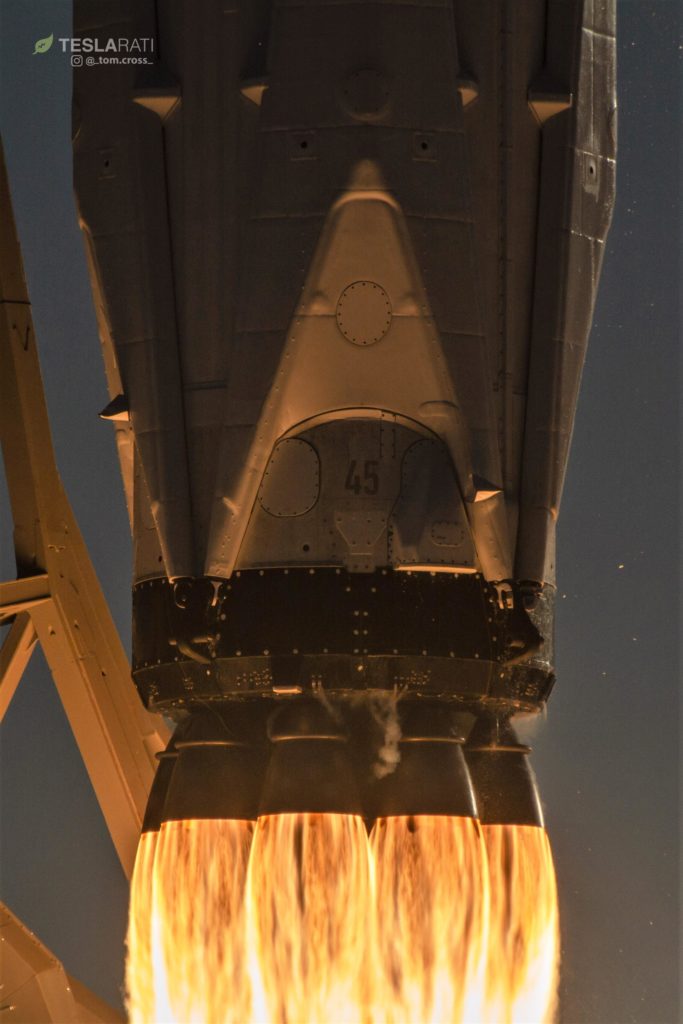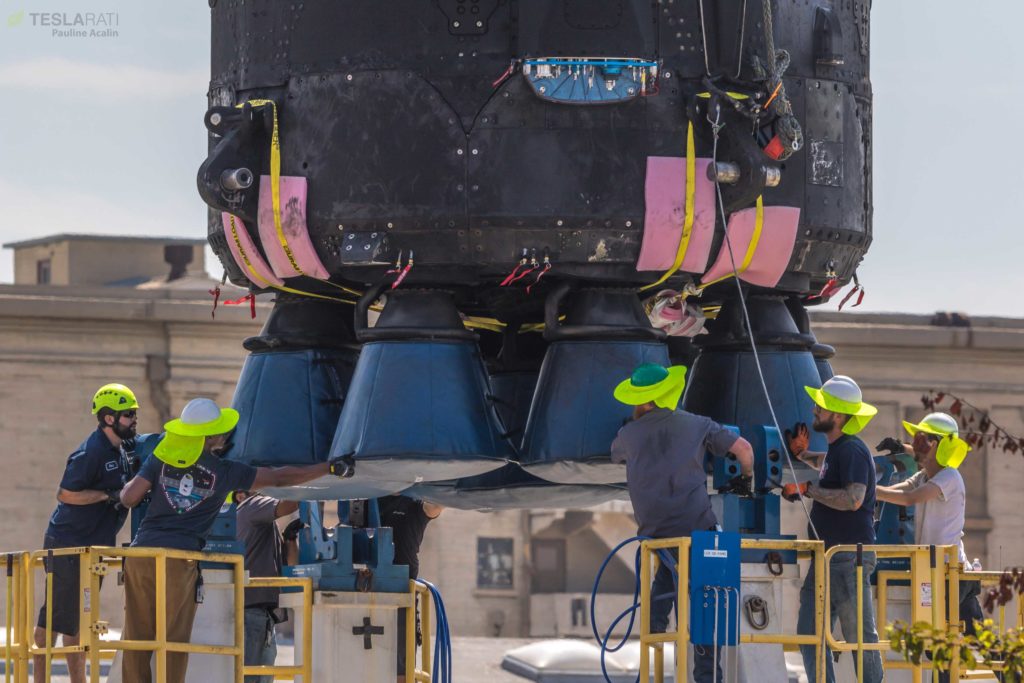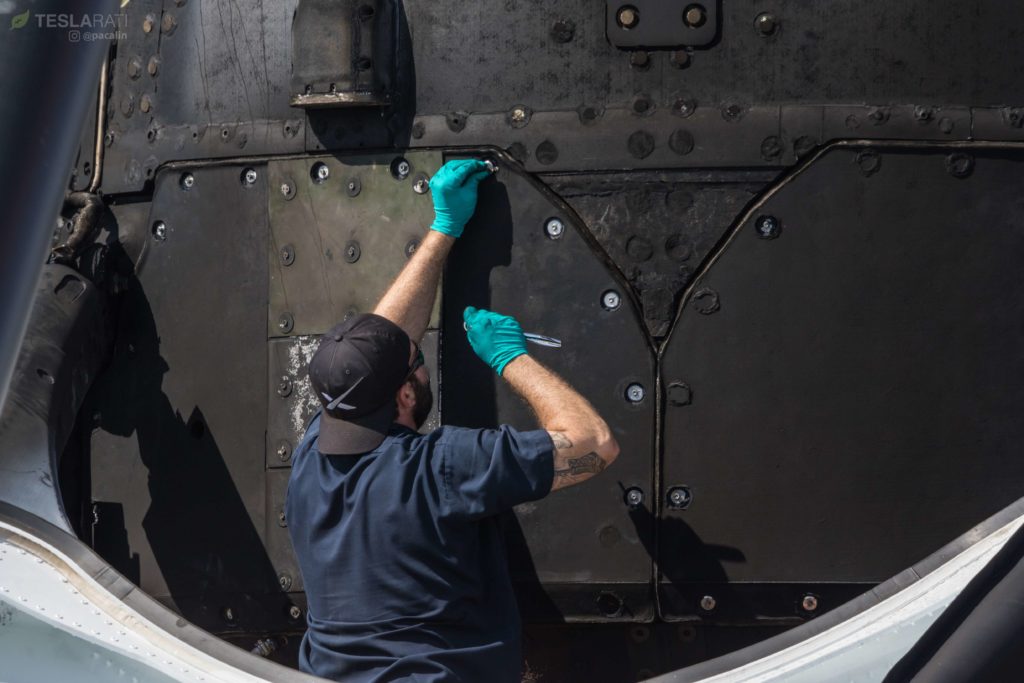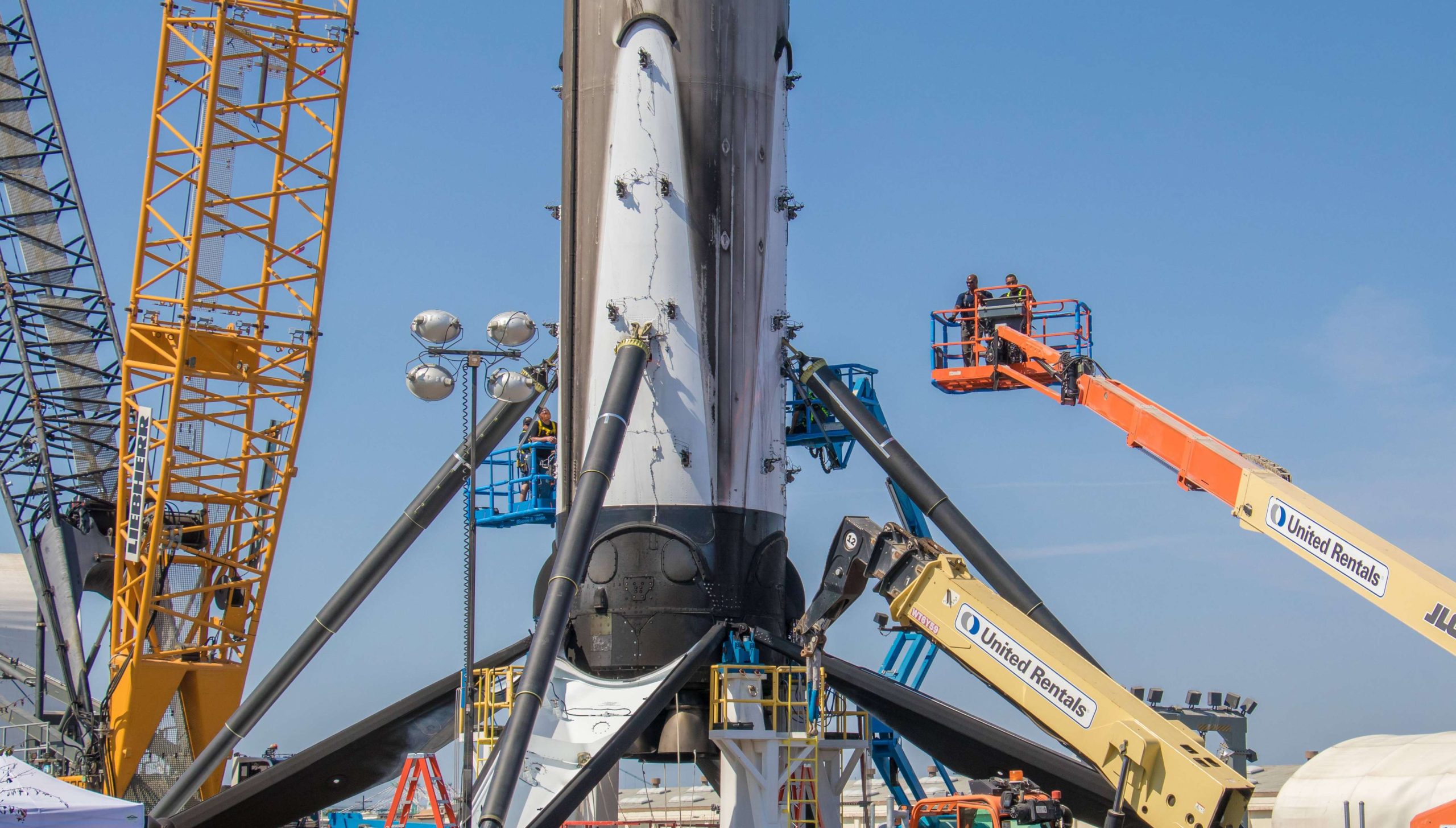
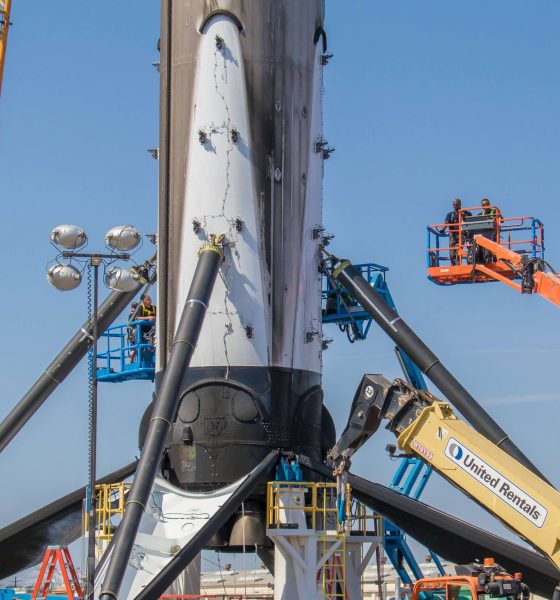
News
SpaceX’s second Falcon 9 Block 5 booster reuse closes in as rocket refurb continues
Scheduled on October 7th, SpaceX is roughly three weeks out from the next routine launch of Falcon 9, set to carry the ~2800 kg (6200 lb) Argentinian satellite SAOCOM-1A into a low polar orbit from the company’s Vandenberg Air Force Base launch facilities.
Cocooned inside Falcon 9’s payload fairing during the final days of August, the Earth observation satellite’s launch will mark a number of exciting milestones for SpaceX, including the second reuse of a Block 5 booster and the debut of a California-based rocket landing zone barely 400m (1400ft) from the launch pad.
Última foto del satélite argentino SAOCOM 1A en Tierra! Los equipos de la CONAE, VENG, @invapargentina y @CNEAok finalizaron la integración y encapsulado del SAOCOM 1A en la cofia del lanzador Falcon 9 de @SpaceX. El satélite está listo! Comienzan preparativos de lanzamiento! pic.twitter.com/pwwj0NYIwE
— CONAE (@CONAE_Oficial) September 14, 2018
Previously tasked with launching Iridium’s 7th group of 10 NEXT satellites on July 25th, Falcon 9 B1048 has been assigned as SAOCOM 1A’s ride to orbit, originally expected to refly as early as September 5th and September 28th. Despite the delays, it still appears that B1048 will easily snag the SpaceX record for second fastest booster turnaround – 74 days compared to Block 5 booster B1045’s 71 days gap between launching NASA’s TESS and CRS-15 missions.
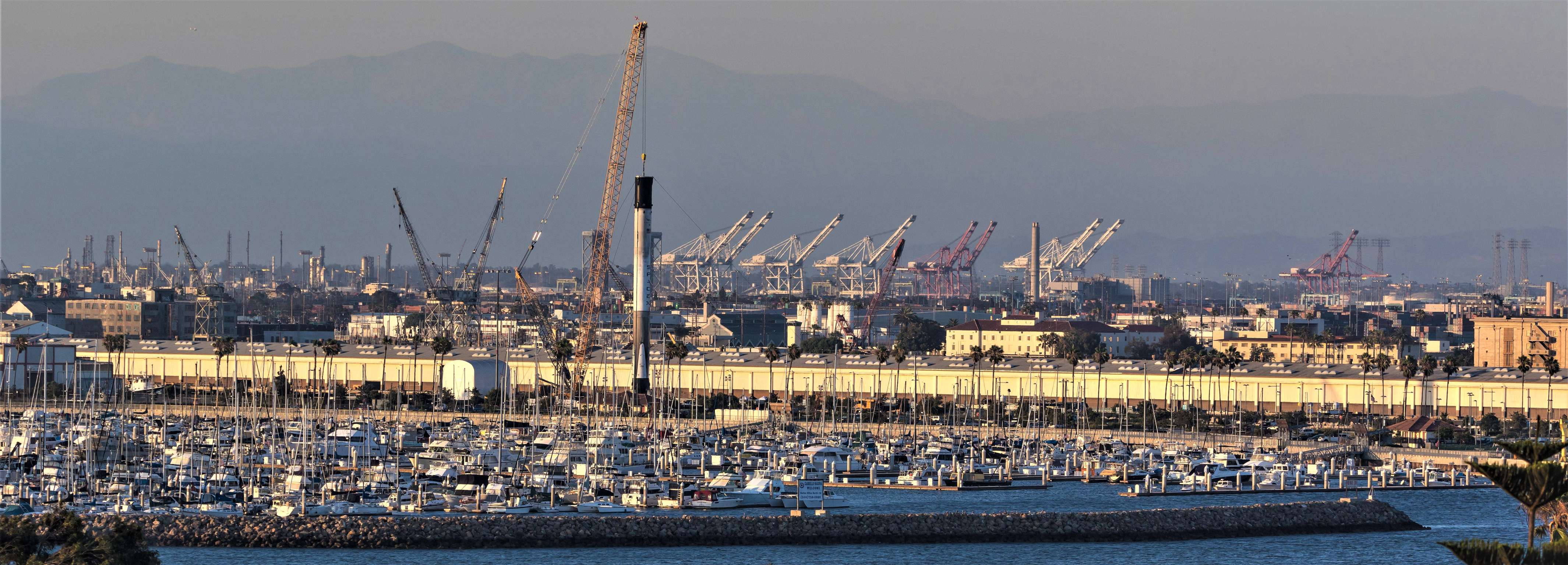
According to a number of comments from satellite engineers involved in the launch, most of the month-long slip rested on rocket availability, meaning that SpaceX was having some sort of difficulty with Falcon 9 components. Given photos and official comments showing that SAOCOM-1A was encapsulated in its payload fairing more than 5 weeks before launch (August 30th) and that Falcon 9 Block 5 is a fairly new launch vehicle, especially in a flight-proven configuration, the most logical explanation is that SpaceX is simply being extra cautious and thorough with B1048’s post-flight analysis and refurbishment.
It’s entirely possible that SpaceX engineers and technicians could have managed a ~40-day turnaround to make the original September 5 launch date, but it’s equally likely that some off-nominal characteristics were noted while the booster was being prepped for transport after craning off of drone ship Just Read The Instructions. In fact, B1048’s recovery operations were exceptionally lengthy and in-depth, including an extraordinary few hours during which technicians removed the booster’s Merlin 1D access panels, baring wholly-uncovered rocket engines in full view of a public area. Nothing equivalent has ever been observed over the course of more than a dozen Falcon booster recoveries, perhaps indicating some unique circumstances in the case of B1048.
- After launching in April 2018, B1045 landed on OCISLY and is being refurbished for a second launch in just 5 days, on June 29. (Tom Cross)
- An excellent look at Block 5 booster B1048’s aft, showing off two of four launch clamp attachment points. (Pauline Acalin)
- SpaceX technicians reinstall Falcon 9 B1048’s Merlin bay covers after examining the interior for several hours. (Pauline Acalin)
- SpaceX’s West Coast landing zone is preparing for its debut, currently NET October 6th 2018. (Pauline Acalin/Teslarati)
The most obvious explanation is that those publicly-visible inspections were used to judge whether the flight-proven booster could return directly to SpaceX’s Vandenberg launch pad or needed to make a stop at the company’s dedicated Hawthorne factory and refurbishment facilities. Judging from the month-long slip that transpired, it’s probable that the latter option was selected. Regardless, caution is key when a customer’s payload is on the line.
Once it makes its way to the launch pad for the second time, B1048 will have the opportunity to both become the first Block 5 booster to land on land and the first rocket ever to land at SpaceX’s West Coast Landing Zone (LZ), under construction/development for the last two or so years. Just like its Floridan twins, the California LZ will only be an option for particularly lightweight payloads and lower-energy launch profiles, of which SAOCOM 1A (and 1B) certainly fit the bill.
For prompt updates, on-the-ground perspectives, and unique glimpses of SpaceX’s rocket recovery fleet check out our brand new LaunchPad and LandingZone newsletters!

Elon Musk
Tesla’s Elon Musk: 10 billion miles needed for safe Unsupervised FSD
As per the CEO, roughly 10 billion miles of training data are required due to reality’s “super long tail of complexity.”

Tesla CEO Elon Musk has provided an updated estimate for the training data needed to achieve truly safe unsupervised Full Self-Driving (FSD).
As per the CEO, roughly 10 billion miles of training data are required due to reality’s “super long tail of complexity.”
10 billion miles of training data
Musk comment came as a reply to Apple and Rivian alum Paul Beisel, who posted an analysis on X about the gap between tech demonstrations and real-world products. In his post, Beisel highlighted Tesla’s data-driven lead in autonomy, and he also argued that it would not be easy for rivals to become a legitimate competitor to FSD quickly.
“The notion that someone can ‘catch up’ to this problem primarily through simulation and limited on-road exposure strikes me as deeply naive. This is not a demo problem. It is a scale, data, and iteration problem— and Tesla is already far, far down that road while others are just getting started,” Beisel wrote.
Musk responded to Beisel’s post, stating that “Roughly 10 billion miles of training data is needed to achieve safe unsupervised self-driving. Reality has a super long tail of complexity.” This is quite interesting considering that in his Master Plan Part Deux, Elon Musk estimated that worldwide regulatory approval for autonomous driving would require around 6 billion miles.
FSD’s total training miles
As 2025 came to a close, Tesla community members observed that FSD was already nearing 7 billion miles driven, with over 2.5 billion miles being from inner city roads. The 7-billion-mile mark was passed just a few days later. This suggests that Tesla is likely the company today with the most training data for its autonomous driving program.
The difficulties of achieving autonomy were referenced by Elon Musk recently, when he commented on Nvidia’s Alpamayo program. As per Musk, “they will find that it’s easy to get to 99% and then super hard to solve the long tail of the distribution.” These sentiments were echoed by Tesla VP for AI software Ashok Elluswamy, who also noted on X that “the long tail is sooo long, that most people can’t grasp it.”
News
Tesla earns top honors at MotorTrend’s SDV Innovator Awards
MotorTrend’s SDV Awards were presented during CES 2026 in Las Vegas.

Tesla emerged as one of the most recognized automakers at MotorTrend’s 2026 Software-Defined Vehicle (SDV) Innovator Awards.
As could be seen in a press release from the publication, two key Tesla employees were honored for their work on AI, autonomy, and vehicle software. MotorTrend’s SDV Awards were presented during CES 2026 in Las Vegas.
Tesla leaders and engineers recognized
The fourth annual SDV Innovator Awards celebrate pioneers and experts who are pushing the automotive industry deeper into software-driven development. Among the most notable honorees for this year was Ashok Elluswamy, Tesla’s Vice President of AI Software, who received a Pioneer Award for his role in advancing artificial intelligence and autonomy across the company’s vehicle lineup.
Tesla also secured recognition in the Expert category, with Lawson Fulton, a staff Autopilot machine learning engineer, honored for his contributions to Tesla’s driver-assistance and autonomous systems.
Tesla’s software-first strategy
While automakers like General Motors, Ford, and Rivian also received recognition, Tesla’s multiple awards stood out given the company’s outsized role in popularizing software-defined vehicles over the past decade. From frequent OTA updates to its data-driven approach to autonomy, Tesla has consistently treated vehicles as evolving software platforms rather than static products.
This has made Tesla’s vehicles very unique in their respective sectors, as they are arguably the only cars that objectively get better over time. This is especially true for vehicles that are loaded with the company’s Full Self-Driving system, which are getting progressively more intelligent and autonomous over time. The majority of Tesla’s updates to its vehicles are free as well, which is very much appreciated by customers worldwide.
Elon Musk
Judge clears path for Elon Musk’s OpenAI lawsuit to go before a jury
The decision maintains Musk’s claims that OpenAI’s shift toward a for-profit structure violated early assurances made to him as a co-founder.

A U.S. judge has ruled that Elon Musk’s lawsuit accusing OpenAI of abandoning its founding nonprofit mission can proceed to a jury trial.
The decision maintains Musk’s claims that OpenAI’s shift toward a for-profit structure violated early assurances made to him as a co-founder. These claims are directly opposed by OpenAI.
Judge says disputed facts warrant a trial
At a hearing in Oakland, U.S. District Judge Yvonne Gonzalez Rogers stated that there was “plenty of evidence” suggesting that OpenAI leaders had promised that the organization’s original nonprofit structure would be maintained. She ruled that those disputed facts should be evaluated by a jury at a trial in March rather than decided by the court at this stage, as noted in a Reuters report.
Musk helped co-found OpenAI in 2015 but left the organization in 2018. In his lawsuit, he argued that he contributed roughly $38 million, or about 60% of OpenAI’s early funding, based on assurances that the company would remain a nonprofit dedicated to the public benefit. He is seeking unspecified monetary damages tied to what he describes as “ill-gotten gains.”
OpenAI, however, has repeatedly rejected Musk’s allegations. The company has stated that Musk’s claims were baseless and part of a pattern of harassment.
Rivalries and Microsoft ties
The case unfolds against the backdrop of intensifying competition in generative artificial intelligence. Musk now runs xAI, whose Grok chatbot competes directly with OpenAI’s flagship ChatGPT. OpenAI has argued that Musk is a frustrated commercial rival who is simply attempting to slow down a market leader.
The lawsuit also names Microsoft as a defendant, citing its multibillion-dollar partnerships with OpenAI. Microsoft has urged the court to dismiss the claims against it, arguing there is no evidence it aided or abetted any alleged misconduct. Lawyers for OpenAI have also pushed for the case to be thrown out, claiming that Musk failed to show sufficient factual basis for claims such as fraud and breach of contract.
Judge Gonzalez Rogers, however, declined to end the case at this stage, noting that a jury would also need to consider whether Musk filed the lawsuit within the applicable statute of limitations. Still, the dispute between Elon Musk and OpenAI is now headed for a high-profile jury trial in the coming months.
